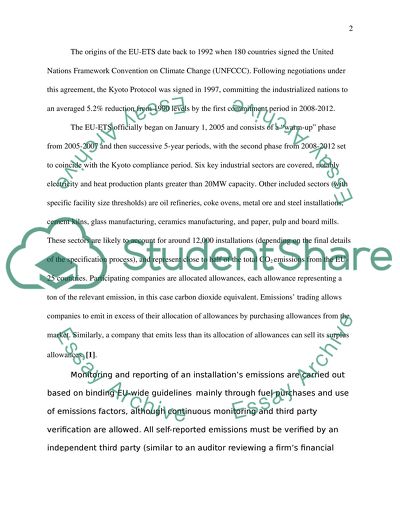Cite this document
(Emission Trading Schemes Essay Example | Topics and Well Written Essays - 2000 words, n.d.)
Emission Trading Schemes Essay Example | Topics and Well Written Essays - 2000 words. https://studentshare.org/environmental-studies/1529360-emission-trading-schemes
Emission Trading Schemes Essay Example | Topics and Well Written Essays - 2000 words. https://studentshare.org/environmental-studies/1529360-emission-trading-schemes
(Emission Trading Schemes Essay Example | Topics and Well Written Essays - 2000 Words)
Emission Trading Schemes Essay Example | Topics and Well Written Essays - 2000 Words. https://studentshare.org/environmental-studies/1529360-emission-trading-schemes.
Emission Trading Schemes Essay Example | Topics and Well Written Essays - 2000 Words. https://studentshare.org/environmental-studies/1529360-emission-trading-schemes.
“Emission Trading Schemes Essay Example | Topics and Well Written Essays - 2000 Words”. https://studentshare.org/environmental-studies/1529360-emission-trading-schemes.


